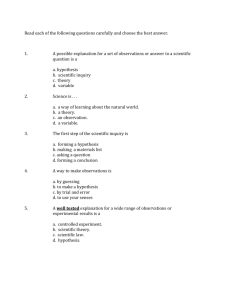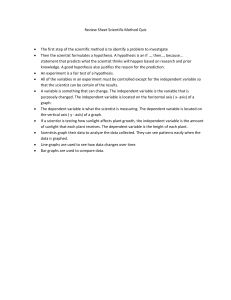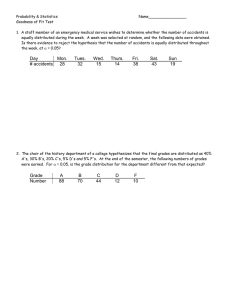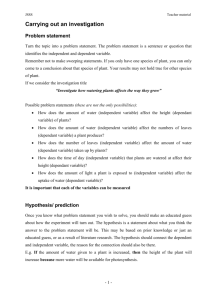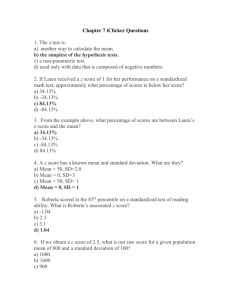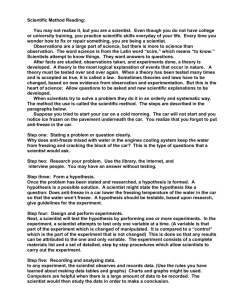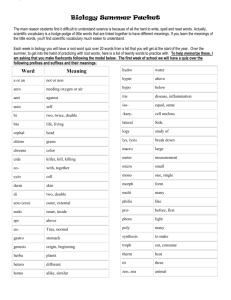Scientific Method/Design
advertisement
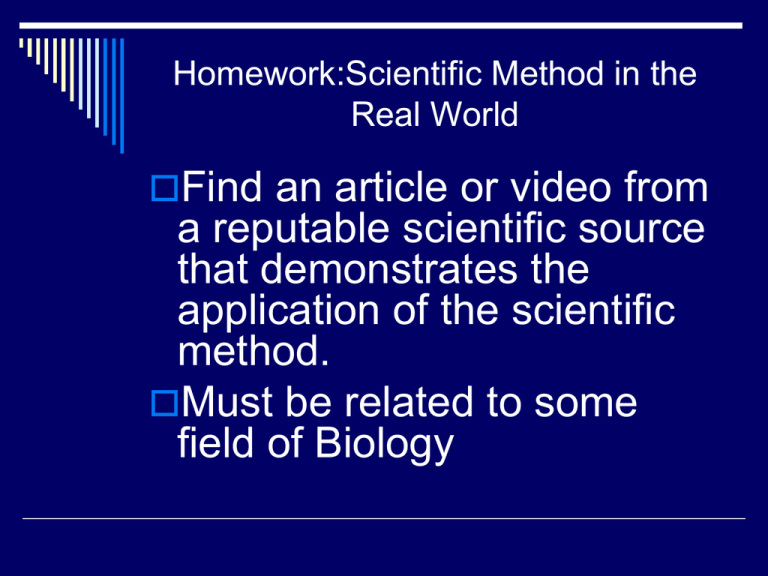
Homework:Scientific Method in the Real World Find an article or video from a reputable scientific source that demonstrates the application of the scientific method. Must be related to some field of Biology Scientific inquiry Experimental Design In- Scientific Method Read the last page of the black box packet. Write each hypothesis and determine which would be useful for a scientific investigation. Explain each answer. Create a general statement about the characteristics of a useful hypothesis Thru-Scientific Inquiry Question Based on observations or information gained from previous research. If an experiment can be done or data can be collected, then a question can be answered scientifically Hypothesis Potential answer to the question Can be in If, Then format or just a statement Only useful if it can be falsified through experimentation Variables Independent Variable-deliberately varied during the experiment. Affects the dependant variable. Can often be time. May not be directly manipulated by the investigator, but data can be collected to evaluate the hypothesis. Ex: Are more crimes committed during a full moon? Variables Dependant Variable- what is measured during the experiment Indicates the effect of the independent variable Identify the Variables The diversity of algal species is calculated for a coastal area before and after an oil spill Guinea pigs are kept at different temperatures for six weeks. Percent weight gain is recorded. A scientist hypothesizes that the adult weight of a dog is higher when it has fewer litter mates (brothers and sisters) as a puppy. Controlled (standardized) Variables Factors that are kept the same in all treatments Isolates the effect of the independent variable on the dependant variable. Controlled Variables A scientist wants to determine the effect of temperature on the amount of chicken eggs hatched What is the IV? DV? Controlled Variables? Levels of Treatment The values set for the independent variable Treatment levels are varied to obtain a broad set of data Typically based on prior knowledge of the system. Control Group A treatment in which the independent variable is either eliminated or is set at a standard value (room temperature, etc.) Results are compared to experimental treatments Identify the control group A scientist studies the amount of alcohol produced by yeast when it is incubated with different types of sugars The effect of NutraSweet on tumor development in lab rats is investigated The effect of light intensity on photosynthesis is measured by collecting oxygen produced by a plant. Replications (trials) Repeat the experiment several times using the exact same conditions. Determines consistent results Don’t expect the exact same result in each replication. A certain amount of variation is expected in biological systems. Be sure your sample size is not too small Out- Experimental Design A group of students hypothesizes that the amount of alcohol produced in fermentation depends on the amount of glucose supplied to the yeast. They want to use 5%, 10%, 15%, 20%, 25%, and 30% glucose solutions.

